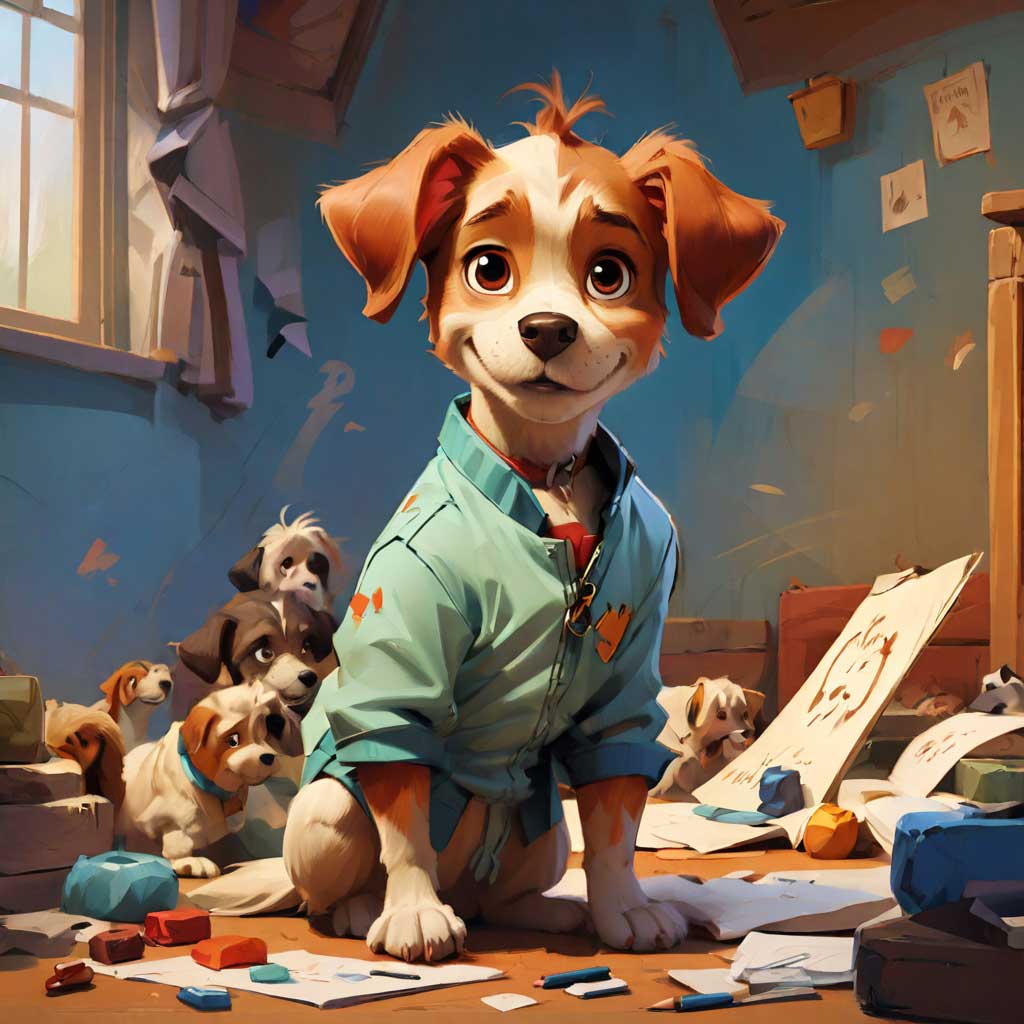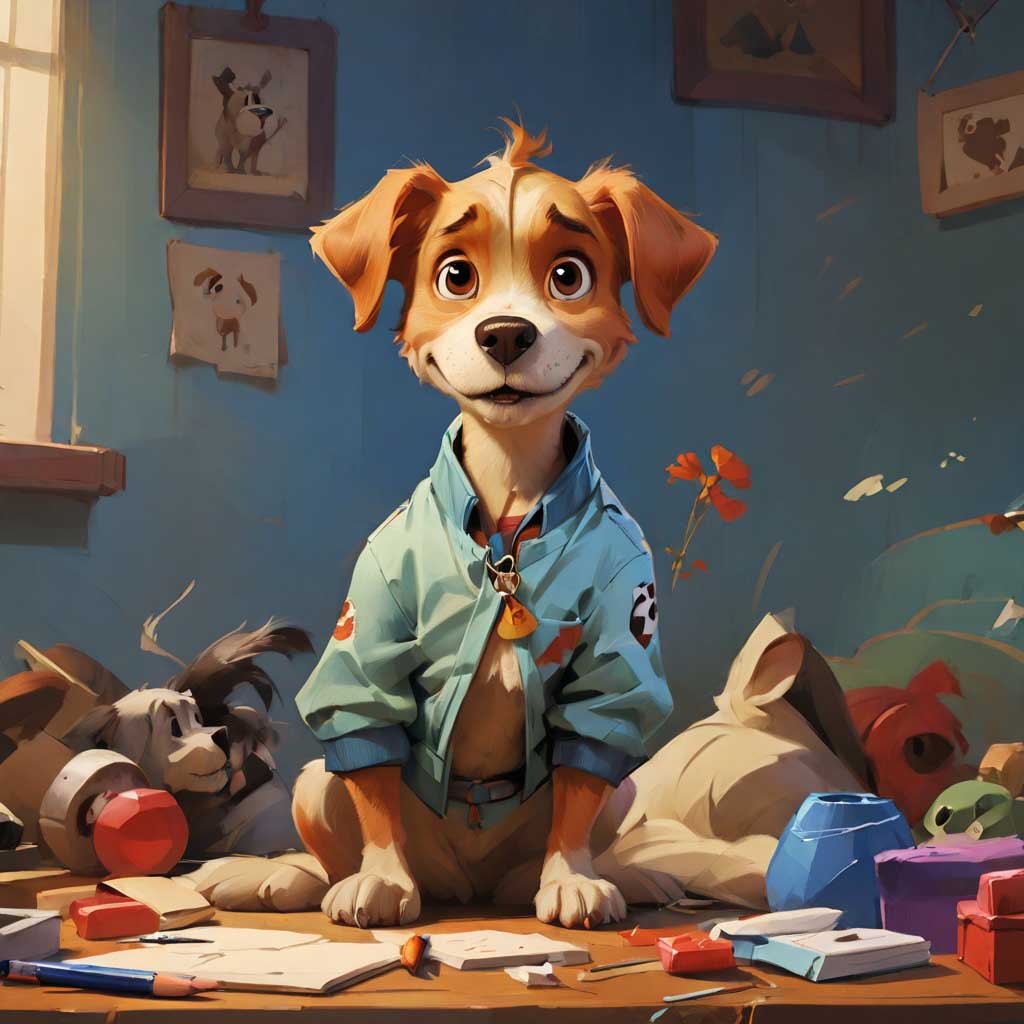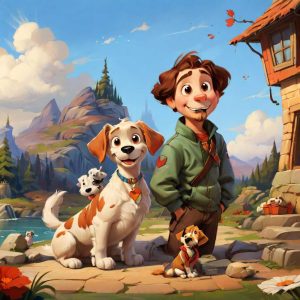The Art of Animating Dogs in Cartoons
If there’s one thing that can bring a smile to just about anyone’s face, it’s a cute and animated dog in a cartoon. From classics like Scooby-Doo to modern favorites like Clifford the Big Red Dog, animated dogs have been a beloved part of our entertainment for decades. But have you ever stopped to wonder about the art and skill that goes into animating these lovable characters? In this article, we’ll explore the art of animating dogs in cartoons, from the techniques used to bring them to life to the creative process behind their design.
A Brief History of Animated Dogs in Cartoons
Dogs have been a staple of animation since the early days of the art form. One of the earliest and most iconic animated dogs is Pluto, the loyal companion of Mickey Mouse. Created by Walt Disney in 1930, Pluto has become an enduring symbol of the bond between humans and dogs in popular culture. Over the years, countless other animated dogs have followed in his paw prints, each with their own unique personalities and charms.
Techniques for Bringing Animated Dogs to Life
Animating a dog in a cartoon requires a combination of artistic skill, technical expertise, and a deep understanding of canine behavior. Animators must carefully study the movements and mannerisms of real dogs in order to create convincing and endearing animated characters. This often involves sketching and studying live models, as well as observing and recording their movements in various environments.
One of the key techniques used in animating dogs is the use of squash and stretch. This technique involves exaggerating the movements and proportions of a character to create a sense of weight and flexibility. For example, when a dog jumps or runs, the animator may stretch out its limbs to create a dynamic and energetic appearance.
Another important technique is the use of secondary animation, which involves adding extra movement to the character’s body to enhance its realism. This might include the wagging of a tail, the bouncing of ears, or the rippling of fur as the dog moves.
The Creative Process Behind Designing Animated Dogs
In addition to movement, the design of an animated dog is also a crucial aspect of bringing it to life on screen. The character’s appearance, color scheme, and facial expressions all play a role in conveying its personality and emotions to the audience. Animators must carefully consider these elements when creating a new animated dog, ensuring that its design is both visually appealing and thematically appropriate for the story being told.
The creative process involved in designing an animated dog often begins with extensive research and brainstorming. This may involve studying photographs and videos of real dogs, as well as immersing oneself in the world of canine behavior and psychology. Once the initial concept for the character has been established, it is then brought to life through sketches, concept art, and digital modeling.
The original photo, kind of sad this dog

Frequently Asked Questions About Animating Dogs in Cartoons
Q: What are some common challenges animators face when creating animated dogs?
A: One of the biggest challenges animators face when creating animated dogs is accurately capturing the essence of a real dog’s movements and behaviors. Dogs have a wide range of expressions and body language, and animating these in a way that feels authentic can be a difficult task.
Q: How do animators research and study real dogs to inform their work?
A: Animators often study real dogs through a variety of methods, including observing them in person, watching videos, and studying photographs. Some animators may even work with live models to better understand the nuances of canine movement and behavior.
Q: What are some of the most iconic animated dogs in cartoon history?
A: Some of the most iconic animated dogs in cartoon history include Pluto, Scooby-Doo, Snoopy, Brian from Family Guy, and Lady and Tramp from Disney’s Lady and the Tramp.
Q: How has the process of animating dogs in cartoons evolved over time?
A: The process of animating dogs in cartoons has evolved significantly over time, thanks to advancements in technology and the increasing diversity of artistic styles. Animators now have access to a wide range of tools and techniques that allow them to create increasingly lifelike and expressive animated dogs.
In conclusion, animating dogs in cartoons is a complex and rewarding art form that requires a deep understanding of canine behavior, as well as a strong blend of artistic and technical skills. The next time you find yourself smiling at a charming animated dog on screen, take a moment to appreciate the incredible artistry and creativity that went into bringing that beloved character to life. And who knows, maybe one day you could be the one designing the next beloved animated dog for generations to enjoy.








+ There are no comments
Add yours